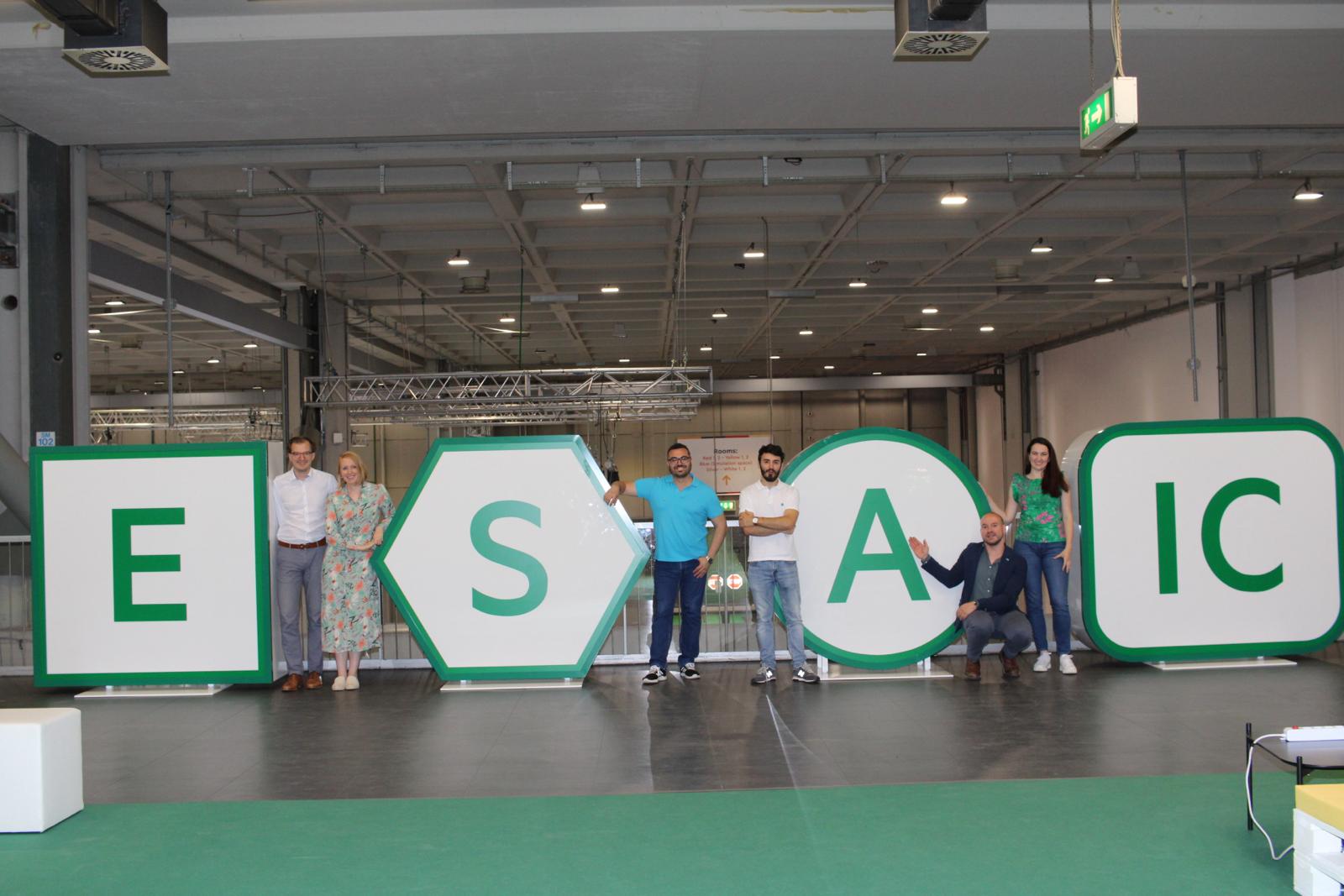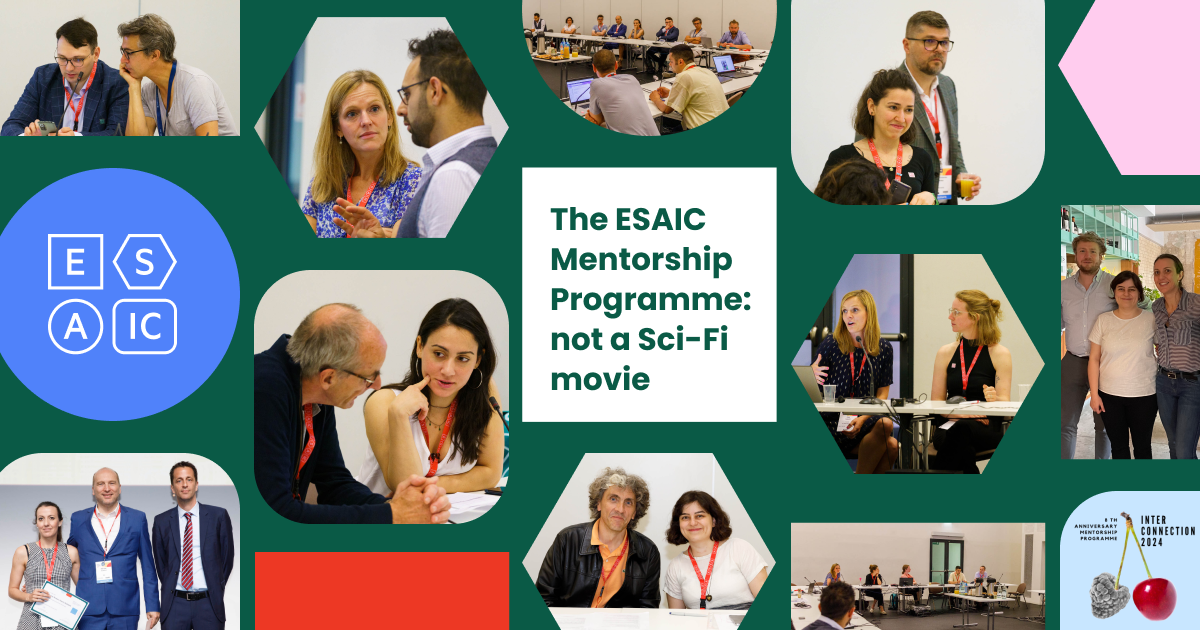ESAIC News
Report on EDAIC 2019: outgoing Chair of the Examinations Committee

We, at the ESAIC Examinations Committee (ExC) certainly feel that most of our plans for the development of the EDAIC far exceeded our bravest expectations.
This is my final report to you as the ESAIC Examinations Committee Chairman. I have worked in this committee since 2005 in different roles and witnessed the conversion of the EDAIC from a small exclusive western European examination to a truly global phenomenon.
It gives me immense pleasure to report to you that the main trend of 2019 was that the EDAIC continued to grow in numbers of examination centres for OLA, Part I and Part II, as well as in numbers of examiners and candidates.
The Examinations Department at the ESAIC has also appointed more staff to support the Examinations Committee (EC) skilfully led by Mr Hugues Scipioni. ExC is grateful to such marvellous support without which the EDAIC simply could not exist.
The leadership of the ExC remained unchanged in 2019 and OLA Subcommittee continues to be chaired by Dr Armen Varosyan with Dr Nicolas Brogly as his Deputy. Part I is chaired by Professor Wolfram Engelhardt and with Krisztina Madách as his Deputy. Part II is chaired by Dr Mario Zerafa and his Deputy is Dr Else-Marie Ringvold.
What have been our achievements and developments in 2019?
The OLA exam was hosted in more centres than ever before – 142 (120 in 2018) centres in 36 countries across the world. A total of 1484 candidates took the assessment beating the last record of 1376 candidates in 2018. OLA is now available in most European countries, while outside Europe, Argentina, Brazil, Chile, China, Lebanon, Oman, Taiwan and the United Arab Emirates supported the OLA in 2019. ESAIC is very proud of this collaboration with our colleagues from Europe and beyond.
The popularity of this online examination format has convinced us to strengthen our efforts to bring the Part I examination into the digital age, with 14 centres in thirteen different countries hosting the Part I on Computer in 2019: Ankara in Turkey, Beirut in Lebanon, Cork in Ireland, Freiburg and Hamburg in Germany, Ghent in Belgium, Jakarta in Indonesia, Kaunas in Lithuania, Msida in Malta, Nijmegen in the Netherlands, Odessa in Ukraine, Oslo in Norway, Turin in Italy and Yerevan in Armenia. These centres were provided with hard copies of the Part I examination Papers in case of internet connectivity failure, but none were needed! Unlike the OLA, the online version of the EDAIC Part I was split into two sessions to fit the organisation of the paper version. All these centres used hardware provided by the centre, rather than candidates’ laptops as it is the case in OLA. Three more languages were added to electronic Part I making the total to six.
At present, there is still discussion over the future of the ITA and ideally, it would be replaced by OLA but there are arguments for continuously running it alongside the EDAIC Part I too with few countries extensively using this kind of knowledge assessment. For 2020 there will be no change and ITA will continue as presently.
The Part I Examination was sat in 76 centres (71 in 2018), in 44 countries by 2720 candidates. We were delighted to open a new centre in Dresden (Germany) thanks to the efforts of Prof. Gama de Abreu. We also improved our presence in terms of centres in Eastern Europe with Minsk (Belarus) impeccably coordinated by Dr Korzan, who became a member of the Subcommittee Part I in 2019 taking care of Russian translation, Odessa (Ukraine) thanks to the work of Dr Artemenko and Kaunas (Lithuania) that was coordinated by Dr Vilma Traškaitė – Juškevičienė and supported by the President of Lithuanian Society Dr Tomas Jovaisa.
Furthermore, we had the pleasure to receive the support from Košice, Slovakia where Prof Firment and his team are eager to start organising the EDAIC Part I, which should happen in 2020. A new non-European centre based at the Cleveland Hospital decided to support our examination in Abu Dhabi (United Arab Emirates) thanks to the team brilliantly led by Dr Kastsiuchenka. We continue to build our relationship with Brazil, Argentina, Egypt, India, Indonesia, Lebanon and Oman. On this occasion and behalf of the Examinations Committee, I would like to profusely thank the Hosts of all new and established EDAIC centres who always do their best to coordinate the examination in excellent conditions. EDAIC Hosts are key to the stability and smoothness of our examinations all around the world. Many thanks to all of them!
Prof. Marcelo Gama de Abreu, EDAIC Part I Host in Dresden, Germany.
Dr Maryna Korzan, EDAIC Part I Host in Minsk, Belarus.
Dr Vilma Traškaitė – Juškevičienė, EDAIC Part I Host in Kaunas, Lithuania.
Dr Siarhei Kastsiuchenka, EDAIC Part I Host in Abu Dhabi, United Arab Emirates.
The candidate who scores the highest combined mark in the Part I Examination is awarded the John Zorab prize. I am delighted to announce that this year’s winner is Dr Andrea Angi. She is of Romanian nationality and is currently finishing her residency at Intensive Care department at the Zalău Emergency County Hospital in Romania. Many congratulations to Dr Angi and we look forward to seeing her at the Awards Ceremony at the Annual Congress in Barcelona in 2020.
Dr Andrea Angi, 2019 Winner of John Zorab prize.
There were 15 Part II centres in 2019 and all of them were fully booked. 1175 registrations were made and we examined 855 candidates in total.
For the second time, the Part II examination took place outside Europe in São Paulo, Brazil right after the Paulista Congress of Anaesthesiology (COPA) and for the first time in the Portuguese language. We are delighted to work with our enthusiastic Brazilian colleagues on this project which will be repeated in 2020.
On the side of novelties in 2019, we fully and successfully switched to a new and simpler marking system for EDAIC Part II. For the first time, the ESAIC selected the winner of the Sir Peter Simpson Prize, who is the candidate who obtains the best score at the EDAIC Part II examination. In 2019, it was achieved by Dr Podolyak, of Hungarian nationality, who works at the Cleveland Clinic Foundation (Ohio, USA). Many congratulations to him, and we look forward to welcoming him at the Awards Ceremony during Euroanaesthesia 2020 in Barcelona.
Dr Attila Podolyak, 2019 Winner of Sir Peter Simpson prize.
What will 2020 bring?
Registration for OLA 2020 closed on 5th of March 2020. Candidates could choose between 158 (142 in 2019) centres in 40 Countries including new centres in Copenhagen, Denmark; Reykjavik, Iceland; Manipal, India; Tirgu Mures, Romania; Banská Bystrica and Košice, Slovakia.
While this article is sent for publication, about 1900 candidates registered to sit OLA in 2020 which is another record! We hope the COVID-19 crisis will have little or no impact on the number of candidates taking the OLA this year, as OLA is essentially a local examination.
Registration for Part I 2020 will open in the second half of March 2020. Candidates will be able to present the examination in the following new centres: Brussels in Belgium, Rancagua in Chile, Copenhagen in Denmark, Oulu in Finland, Reykjavik in Iceland, Kochi & New Delhi in India, Bergen in Norway and Krasnoyarsk in Russia. A very warm welcome to the new hosts who have decided to join ESAIC in the great EDAIC adventure!
We are also thrilled to announce the adoption of the EDAIC Part I examination in Flanders, Belgium. While adoptions almost invariably take place at the level of the national authorities, education is a competence of the communities in Belgium and this specificity made the adoption possible. We hope the other Belgian communities will soon adopt EDAIC Part I too and we remain at their disposal for any question.
As has been announced on the ESAIC website, Registration for Part II EDAIC 2020 opened in January 2020. We are pleased to report that once again a record number of candidates (1278) have registered for 16 EDAIC Part II centres, with the introduction of a three-day examination and Portuguese language in Porto. The registration is now closed with all the European centres at full capacity. As for the current COVID-19 situation, the Examinations Office will inform all participants immediately whenever it is ascertained that the organisation of any EDAIC Part II is altered in 2020. For examiners, we hope to introduce an examiner training with online modules to complete for new and experienced examiners. Prof. Javier Belda was appointed within the EDAIC Part II Subcommittee to give continuous feedback on examiners’ performance. In recognition of their commitment to the EDAIC Part II, a Cocktail Reception will be organised for the examiners during Euroanaesthesia 2020.
I would like to conclude that the European Diploma in Anaesthesiology and Intensive Care is in great shape and continues to grow year by year covering most of the European countries.
map of Europe showing the EDAIC coverage.
It gains more and more recognition on the par with many national examinations and begins to venture well outside Europe. Unlike many other postgraduate examinations, one of the strengths of the EDAIC is the multi-language approach offering 11 languages for Part I and 6 languages for Part II. Another strength is the representation of all European countries adopting the EDAIC Part I, Part II or OLA in the relevant Examinations Subcommittee, allowing direct participation of these countries in every aspect of the examination.
In parallel to the growth of the exam, the ExC constantly analyses feedback received from candidates, Hosts, Examiners, providers or Sister Societies to improve all existing processes or developing new ones. We do realise that any examination can only be successful if its focus is and remains on quality.
On behalf of the ExC, I would like once again to express my deepest gratitude to all EDAIC examiners, hosts and invigilators for the continuous involvement in spreading the European standards of knowledge assessment around the globe. It is because of you that we were able to arrive where we are and proudly call the EDAIC a truly global phenomenon, although its heart beats in Europe. My report will not be complete without thanking all the ESAIC staff that work hard behind the scenes to run the EDAIC as smoothly as it continues to develop.
And last but not the least I would like to wish all the EDAIC candidates the best of luck in the quest to obtain this prestigious qualification but above all, I wish them success!
Dr Andrey Varvinskiy
Examinations Committee Chairman


















